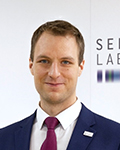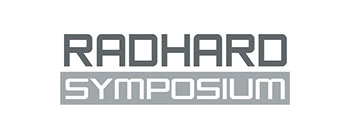Abstract

A Journey Through the Cosmic Hazards: Understanding the Space Radiation Environment
Christoph Tscherne1
1 Seibersdorf Labor GmbH, Austria
Abstract
Spacecraft in Earth orbit face a major threat: the complex and harsh radiation environment they encounter. This environment, characterized by its complexity and severity, presents significant challenges to mission planning and spacecraft durability. Radiation exposure accelerates the degradation of electrical, electronic, and electromechanical (EEE) components, resulting in degraded performance or failure [1].
To effectively address these challenges, a thorough understanding of space radiation is essential. In Earth orbits such as low Earth orbits (LEO), medium Earth orbits (MEO), and geostationary Earth orbits (GEO), the radiation environment includes solar energetic particles (SEP), galactic cosmic radiation (GCR), and charged particles trapped in the Earth's magnetic field. These types of radiation exhibit remarkable variations in energy and flux, subject to short-term fluctuations and long-term modulation influenced by solar activity [2].
This talk covers the unique characteristics of the various contributions to the space radiation environment. It provides a comprehensive review of SEP, GCR, and trapped particles, emphasizing their importance for mission planning and radiation hardness assurance (RHA) of spacecraft components [3, 4, 5]. By analyzing the characteristics of space radiation and its effects, this presentation aims to provide space mission designers with the knowledge needed to navigate and mitigate the challenges posed by the cosmic radiation environment.
References
[1] Poivey, Christian. "Total Ionizing and Non-Ionizing Dose Radiation Hardness Assurance." Short Course of NSREC 2017, 17 July 2017, New Orleans. USA. Presentation.
[2] Holmes-Siedle, Andrew G., and Len Adams. Handbook of radiation effects. 2nd ed., Oxford University Press, 2002.
[3] ECSS-Q-ST-60-15C. “Radiation hardness assurance – EEE components”, October 2012
[4] ECSS-E-ST-10-04C. “Space Environment”, June 2020
[5] SPENVIS - The European Space Agency (ESA) Space Environment Information System (SPENVIS), available online at http://swe.ssa.esa.int/; https://www.spenvis.oma.be/
Acknowledgments
We acknowledge the insightful talks and presentations of the lecturers of the RADECS and NSREC short courses and the information provided by SPENVIS, ESA's Space Environment Information System (http://swe.ssa.esa.int/; https://www.spenvis.oma.be/).
![[Translate to English:] [Translate to English:]](/fileadmin/uploads/intranet/events/radhard/2023/header-radhard2023.jpg)
